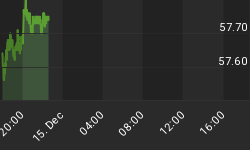Telegraph writer Ambrose Evans-Pritchard says the Fed risks repeating Lehman blunder as US recession storm gathers.
The key problem with Pritchard's superficial analysis is the Lehman bankruptcy is about the only thing the Fed got right.
Liquidity is suddenly drying up. Early warning indicators from US 'flow of funds' data point to an incipent squeeze, the long-feared capitulation after five successive quarters of declining corporate profits.
Yet the Fed is methodically draining money through 'reverse repos' regardless. It has set the course for a rise in interest rates in December and seems to be on automatic pilot.
"We are seeing a serious deterioration on a monthly basis," said Michael Howell from CrossBorder Capital, specialists in global liquidity. The signals lead the economic cycle by six to nine months.
"We think the US is heading for recession by the Spring of 2017. It is absolutely bonkers for the Fed to even think about raising rates right now," he said.
The growth rate of nominal GDP – a pure measure of the economy – has been in an unbroken fall since the start of the year, falling from 4.2pc to 2.5pc. It is close to stall speed, flirting with levels that have invariably led to recessions in the post-War era.
"It is a little scary. When nominal GDP slows like that, you can be sure that financial stress will follow. Monetary policy is too tight and the slightest shock will tip the US into recession," said Lars Christensen, from Markets and Money Advisory.
If allowed to happen, it will be a deeply frightening experience, rocking the global system to its foundations. The Bank for International Settlements estimates that 60pc of the world economy is locked into the US currency system, and that debts denominated in dollars outside US jurisdiction have ballooned to $9.8 trillion.
The world has never before been so leveraged to dollar borrowing costs. BIS data show that debt ratios in both rich countries and emerging markets are roughly 35 percentage points of GDP higher than they were at the onset of the Lehman crisis.
"We are getting closer and closer to a recession, but we are not quite there yet, looking at our forward-indicators," said Lakshman Achuthan from the Economic Cycle Research Institute in New York.
"I can understand why people are getting worried. We have been seeing a 'growth-rate' cyclical downturn for the last two years. The longer this goes on, the less wiggle room there is," he said.
"We are sure there will be no recession this year or into the first two months of 2017, but beyond that there are worrying signs. The deterioration of our leading labour market index is very clear," he said.
Albert Edwards from Societe Generale says gross domestic income (GDI) was the most accurate gauge of the economy as the pre-Lehman crisis unfolded, and this measure has been flat for the last two quarters.
Pritchard for Fed Chairman
Pritchard calls Lehman a Fed failure.
Look at the result: Too big to fail is even bigger, toggle bonds and corporate borrowing are running rampant, no imbalances were fixed, QE is insane by any rational measure, and the Fed did nothing to rein in moral hazard risk taking.
The entire world would be much better off had not only Lehman gone under, but the entire banking system gone under.
Instead, bank are bigger than ever, corporate leverage is higher than ever, debt levels are higher than ever, and the global economy is setup for an even bigger collapse.
Hello Ambrose, this is what happens when you take moral hazard stances of bailing out failed corporations.
Ambrose should throw his hat into the ring to replace Janet Yellen when she retires. He would fit right in. At the first sign of any problem he would scream for more liquidity while bailing out failed financial institutions.
Meanwhile, it's interesting to see the comments by Albert Edwards on GDI. Here are my thoughts: Real GDI, GPDI Recession Indicators Take II.
















